Roadbed, embankment, tower support and culvert stability problems on permafrost
V. G. Kondratiev
1. Zabaikalsky State University, Chita, Russia
2. Moscow State University, Moscow, Russia
3. SPE "TransEGEM", Moscow, Russia
1 Introduction
The history of railways constructed in permafrost regions spans more than 110 years: the Transbaikalian, Amur,Alaska, Norilsk, Gudson, Labrador, Baikal-Amur (BAM),Amur-Yakut (АЯМ), Yamal, and other railways in Russia,the United States, and Canada. Each of these railroads provides an example of frozen-ground construction and attempts to maintain stable subgrade soils in areas of permafrost and deep seasonal freezing. The problem of preventing roadbed deformation on ice-rich permafrost has been relevant for many decades, not only in Russia (Yelenevsky and Nizovkin, 1936; Sumgin, 1937; Petrukhin and Potatuyeva 1987; Bushin, 1992; Kondratiev, 2011) but also in the United States (Berg and Aitken, 1973; ASCE, 1996), Canada (Hayley,1988), and China (Wu and Cheng, 1988; Fenget al., 2011).
Construction in China of the Qinghai-Tibet Railway along the Golmud-Lhasa segment occurred in 2000–2006.This is the newest stage of major railway construction involving conditions of permafrost and deep seasonal soil freezing. The project involved new, large-scale attempts to solve the site-specific problems of subsidence, roadbed deformation, frost heaving, and thaw settlement.
The author worked with Chinese experts to address geocryological problems along the Qinghai-Tibet Railway and the Qinghai-Tibet Highway for more than 15 years and, in Russia, has been actively engaged in these problems since 1986. Results of his research are reflected in more than 75 technical papers and reports, as well as in six monographs published in the USSR, Russia, the United States, Canada,Norway, China, Japan, and Finland (Kondratiev, 1994, 1996,1998, 2002, 2004, 2005, 2006, 2008, 2011). Information from these projects and various studies are briefly reviewed in this paper.
2 Geocryological problems associated with railroads
The thaw settlements of embankments and the frost heaving of tower supports are most important geocryological problems associated with railways.
2.1 Thaw settlements of railroad embankments
There has been very limited success in building a railway line that would not undergo deformations resulting from thawing of ice-rich soils or frost heave induced by the freezing of wet foundation soil. These problems are characteristic of all railroads, regardless of the length of time in operation. The Transbaikalian Railroad has been in operation more than 100 years, the BAM and the Amur-Yakutsk Main Line for many decades, and the Chara-Cheena and Ulak-Elga connecting lines for only a few years. The Qinghai-Tibet Railway was completed in 2006.
One of the major problem areas on the Transbaikalian Railroad, located at route segment 6,277–6,278 km, is shown in Figure 1. It is ironic that his segment is known as the"golden" kilometer because, at this location, continuous deformation of the embankment and rail-sleeper grating has been occurring since 1949. Train speed limitations of 40 km/h,and sometimes even as low as 15 km/h, have been imposed since 1969, while addition of ballast and rail adjustments are executed annually. For example, in 2009 the odd track was realigned 12 times and the even track 10 times; in 2010 this was done 11 and 9 times, respectively. In some places, the ballast has already subsided 5 to 6 m and subsidence of the rail bed has not ceased. This condition is expected to continue for many years because the embankment was constructed on permafrost soils having a thickness of 25–30 m.
The railway constantly incurs financial losses due to reduced train transit and additional costs for track maintenance and overhead electrical contact system devices which require frequent repair. For instance, in 1995 the total loss for the site due to lower transportation volumes (75% of the 1999 volume) was RUR 241,302 (1991 RUR value), including transit slowdown losses of RUR 195,301.5 (81% of the total loss), expenditures for track realignment and ballasting of RUR 30,000 (12.4%), and additional expenditures for overhead contact system deformation of RUR 16,000 (6.6%).
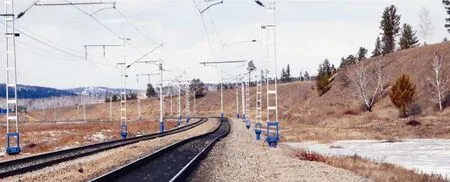
Figure 1 Deformations of track and power line tower supports along an electrified section of the Transbaikalian Railroad,at 6,278 km in March, 2013
On the East Siberian Railroad in the Kazankan region,major railway track deformation has been occurring for nearly two decades on the sidings at 1,374 km on the BAM.Of the original four track lines on this segment, only one remains in service; however, as shown in Figure 2, it requires nearly continual maintenance and recurrent refitting.Over the last several years, RUR 600 million (about USD$30 million) has been spent to refit this section of the railroad, but the problem of stabilization remains unsolved.Train speeds are still limited to 15–40 km/h because of the constant threat of unacceptable deformation of the track on this hillside slope. Because this segment of the BAM is electrified, it is critical that the electric contact net and supporting power line towers should be constantly repaired as well.
North of the Transbaikalian Railroad, the Chara-Cheena Railroad was constructed in 2001. The route extends over an area having extremely complex engineering-geocryological conditions involving ice-rich permafrost. In some areas the underground ice has a thickness of 5–10 m. An example of this railway’s track deformation, occurring under the adverse influence of cryogenic warming processes, is shown in Figure 3.
The thawing of permafrost soil under railroad embankments is usually caused by: (1) increased absorption of solar radiation into the subgrade as compared to the natural surface; (2) the infiltration of precipitation through the em-bankment; (3) an increase in the thickness of snow cover at the base of the embankments and adjacent areas; and (4) the migration of surface and subsurface water into the body and base of the subgrade in side-hill slope areas.

Figure 2 Area of severe deformation on the East Siberian Railroad at 1,374 km of the BAM in July, 2012
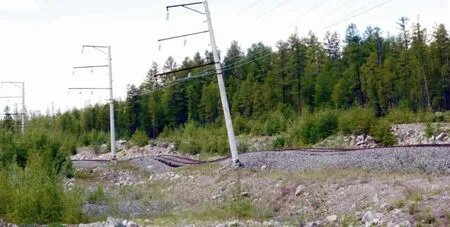
Figure 3 Track and power line tower deformation along the Chara-Cheena Railroad in July, 2012
Several methods of strengthening the base of embankments on ice-rich permafrost have been developed. These methods cause a decrease in the average annual temperature of soils and assist in preserving the permafrost state in a way that reduces warming and enhances cooling. These technical solutions have been presented in many articles, reports, and monographs, in both domestic and foreign publications (Kondratiev, 1994, 1996,1998, 2002, 2004, 2006, 2008, 2011). They have been applied during construction of experimental projects such as the Amur-Yakutia trunk line, the connecting Ulak-Elga railway line,and a feasibility study of stabilization measures for use on the Transbaikalian Railroad.
Some of these solutions have also been applied on the Qinghai-Tibet Railway in China, such as the sun-precipitation protective sheds (awnings) shown in Figure 4. Data from observations at the full-scale site indicate temperature reductions ranging from 3 to 5 °C in the subgrade soil. This cooling influence improves the stability of the subgrade soil on the highly ice-rich permafrost (Feng and Ma, 2006; Niu and Shen, 2006; Fenget al., 2009).
Sun-precipitation protective sheds have also been utilized on Russian railways, including on the Amur-Yakut Railway at the approach to the Lena River, where for tens of kilometers of the railroad there exists a so-called "ice complex" having a thickness of tens of meters. Excavation or mechanical pre-thawing of this ice thickness is considered to be impractical, so this section is protected from thawing during all periods of railroad operation.
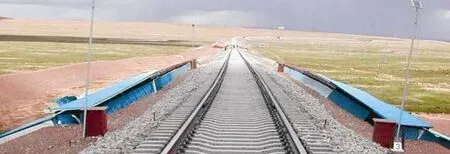
Figure 4 Sun-precipitation awnings on the Qinghai-Tibetan Railway at a site of ice-rich soil in the subgrade, August, 2006
In 2007, a technical study of the use of these sheds to prevent degradation of ice-rich permafrost at the base of an embankment along the Tommot-Kerdem Railway was initiated at five separate sites. These involved three embankments having heights of 3.48, 6.64, and 7.31 m, and two excavations having depths of 2.38 and 5.5 m.
For comparison purposes, at the same sites, thermotechnical calculations of the cooling influence of convective stone/rock covering on the embankments and excavated slopes were executed. The results showed that the sun-precipitation protective sheds had higher efficiency for cooling soils in the subgrade of the embankments and preventing degradation in the underlying permafrost soil, particularly when used in combination with dolomite powder (light-reflecting paint) placed on the surfaces of the base platforms with an antiinfiltration membrane installed underneath. The results further indicated that:
On the slopes of both embankments and excavations, the shed-only application provided a temperature decrease of 10% to 31% (average 22.4%) in the depth of the bedding and cover over the permafrost soils along the axis, as compared with the rock covers.
On the slopes of both embankments and excavations, the use of sheds in combination with dolomite powder painted on the surface of the base platform provided a 25% to 35%(average 30.6%) temperature decrease in the depth of the bedding and cover over the permafrost soils along the axis,as compared with the rock covers.
On the slopes of both embankments and excavations, the use of sheds in combination with the dolomite powder painted on the surface of the base platform and placement of an anti-filtering membrane underneath provided a 28% to 40% (average 34.6%) temperature decrease in the depth of the bedding and cover over the permafrost soils along the axis, as compared with the rock covers. In this case, cooling of the embankment and subgrade soil occurred more rapidly than at sites having only rock covers. After five years the subgrade soils and a substantial part of the body of the embankment still existed in the permafrost state, whereas under the rock covers the embankment remained unfrozen and complete freezing will only occur after 50 years.
Thermotechnical calculations for the Amur-Yakut Highway,as well as experimental research in Tibet, demonstrate that sun-precipitation protective sheds are effective anti-deformation devices for railroad embankments at sites containing icy permafrost soils. The positive effect of the shed application is accomplished by allowing the intensive winter cooling of the embankment and its subgrade and the reduction of infiltration of summer precipitation and the exclusion of direct solar radiation.This helps to preserve the higher strength properties of the frozen soils in the subgrade during all periods.
On the East Siberian Railroad, at 1,841 km on the BAM,sun-precipitation protective sheds have been used since November, 2009 (Figure 5). The sheds were constructed of old wooden railroad ties, geosynthetic fabric, and soil.
The Russian railways innovation and development strategy provides for potential increase of transportation via the Trans-Siberian Railway and the BAM in order to meet economic and social demands. Its goals are to increase freight trains’ axial and unit loads, the weight and the length of trains, as well as their speed. However, before that can be done, it is necessary to cardinally improve the roadbed condition, especially at the sites of icy permafrost where train speed has for decades been limited to 25–40 km/h.
A new ideology and improved scientific and methodological understanding of engineering design and geocryological analyses of maintenance, reconstruction, and upgrading of the Trans-Siberian Railway and the BAM, as well as other roads in the permafrost zone, are required. The thermal analysis should include the whole process of roadbed design, construction, and operation. Geocryological road conditions management should become the cornerstone of the new ideology. The natural cold of the permafrost zone should be utilized as a resource at icy permafrost sites which cannot be removed or thawed in advance due to their significant thickness. It should provide for ground preservation in a permafrost state of the roadbed subgrade during road construction and operation, or, if permafrost degradation under the roadbed is already underway, efforts should be made to halt the degradation.
The operational reliability of railways and highways in permafrost regions is predetermined by the choice of constructive-technological solutions and the methods of effective execution during construction and subsequent maintenance operations. Constant protection of roads, particularly in areas of ice-rich soil, from adverse engineering-geocryological processes is important in order to provide stability and maintain traffic design speeds. To be most effective, such protection needs to be carried out systematically with emphasis on engineering and geocryological monitoring of the routes. This includes providing regular reviews and controls, technical analyses, and providing estimations and forecasts of changes in freezing conditions.Such a methodology allows for detection and mitigation of undesirable and adverse cryogenic processes. The concept of such a monitoring system was developed for the constructed Berkakit-Tommot-Yakutsk Railroad (Kondratiev and Pozin,2000). In 2001, the concept and process were presented in Beijing (Kondratiev and Pozin, 2001) and then applied to the Qinghai-Tibet Railway route.
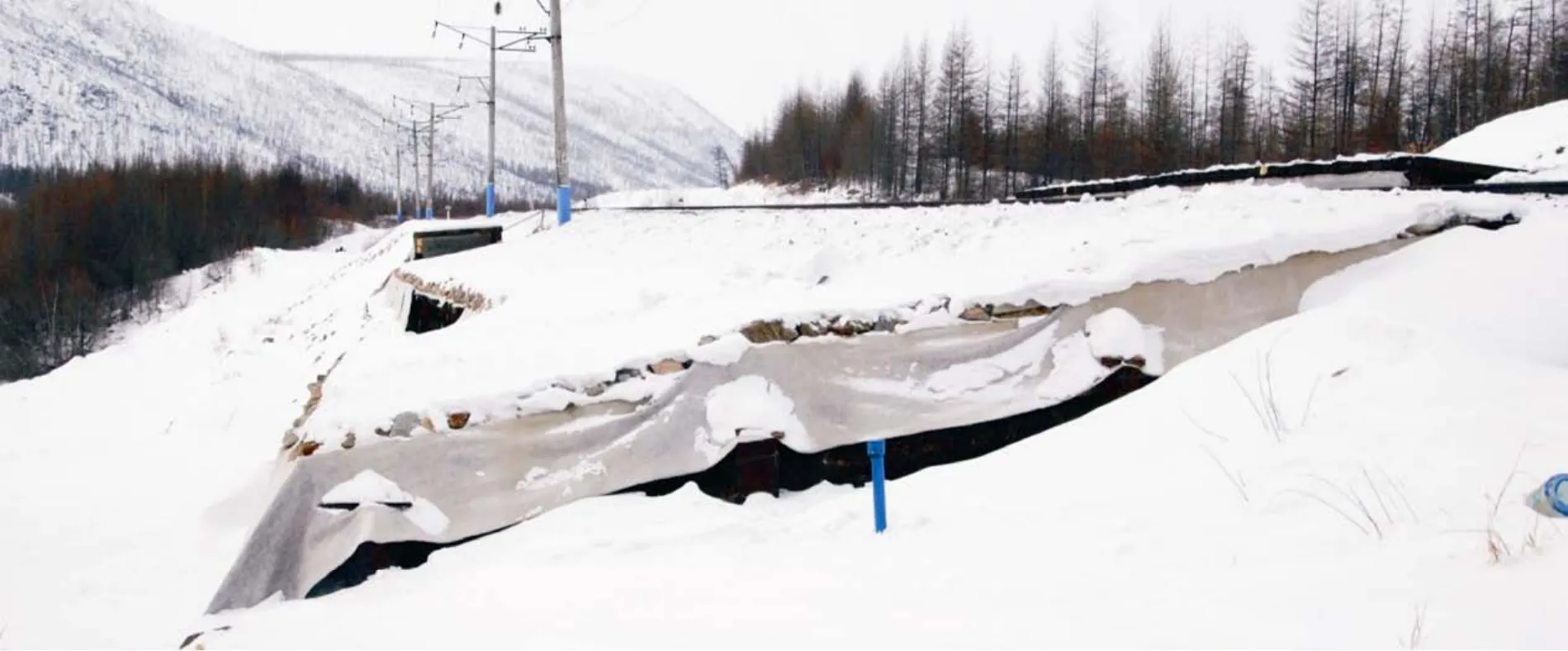
Figure 5 Sun-precipitation protective sheds on the East Siberian Railroad at 1,841 km on the BAM, March 2013
2.2 Frost heaving of tower supports
The provision and effective utilization of basic facilities of railways in areas of permafrost and deep seasonal soil freezing is associated with significant difficulties. As an example, on the Transbaikalian Railroad during 1997–2006,at least 17,192 power line towers supports required corrective repairs and 3,294 were replaced. In most cases, deformation of support structures was caused by frost jacking within wet friable sediments of seasonally thawed (STL) or seasonally frozen (SFL) layers. Figure 6 provides an example of the extent of the tower deformation.

Figure 6 Adverse deformation of power line tower supports along the Transbaikalian Railway in March, 2013
In response to this problem, a patented solution for an anti-frost-heaving measure was developed for the purpose of decreasing the influence of frost-heaving forces. This is accomplished by the simultaneous increase in lateral forces on the tower support in STL by freezing and by cooling within long-term frozen soils by means of: (1) thermosyphon sup-port in STL, inserted into a hollow reinforced concrete support or metal base, (2) wrapping of an anti-frost-heaving sleeve made of freeze-proof grease and a protective casing made of frost-resistant material, (3) placement of heat- and hydro-insulation at the soil surface around the support, and(4) inclusion of a sun-precipitation protective shed around the support and an anti-frost-heaving sleeve (Kondratiev,2005). The anti-frost heaving device design for a metal tower support having a screw base (as shown in Figure 7a) consists of three basic elements: a thermosyphon, thermal insulation, and an anti-frost-heave sleeve.
In October of 2003, anti-frost-heaving devices consisting of a thermosyphon structure and a 1.25-m-long anti-frost-heaving sleeve were installed on five tower support pile bases along the Erofey-Pavlovich-Sgibievo segment of the Transbaikalian Railroad. In April of 2004, an insulation layer around the support bases and protective soil covers were installed after allowing maximum winter freezeback of the soil around the metal support bases. The elevated portions of the supports were then painted with a white cover(Figure 7b).
Periodic level surveys have been conducted on the top part of the tower supports and have shown that the tower bases having anti-frost-heaving devices have remained stable under the varying conditions of soil freezing and thawing cycles. Measurements indicate the vertical movement does not exceed 10 mm, based on the measurement accuracy of a Class III-level survey. In comparison, 20% to 30% of the tower bases not having anti-frost-heaving devices began to heave within two to three years after installation. Their vertical movement in five annual cycles of freezing-thawing has ranged from 10 to 280 mm.
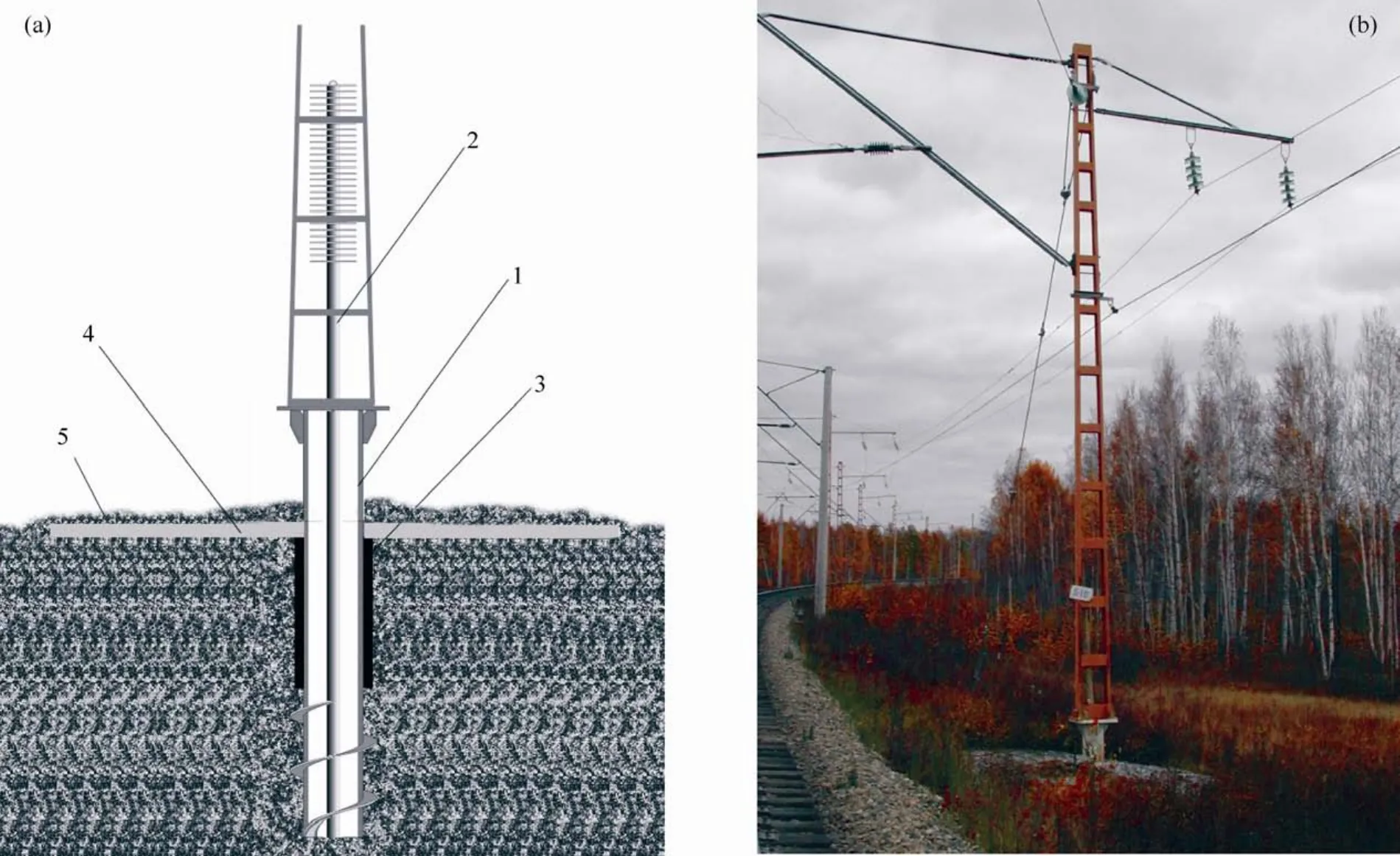
Figure 7 (a): Metal support with screw base 1, thermosyphon inset 2, anti-frost-heaving sleeve 3, thermal insulation 4,and covering soil layer 5 installed on the Transbaikalian Railroad in October, 2003 through April, 2004;(b): insulation layer around a support base and a protective soil cover painted white
Following this verification of the experimental anti-frost-heaving devices for the tower support bases, applications have now been extended to electrified rail line projects including the Karimakaya-Borzya, Burinda-Magdagachi,Mogocha-Amazar, Chernovskaya, and Karimskaya stations.This solution also has the potential for use on other types of tower structures such as signal system devices, high-voltage transmission lines, communication structures, and elevated pipelines which are exposed to the negative influence of soil frost heaving. Evaluation of the sustainability of screw-topped metal bearings was achieved for the 1,749 cross-sections (43.2%) 757 soil heaving––resistant activities are always on 466 (26.6%)––in particularly unfavorable years, 526 (30.1%)––no longer needed. However,soil-heaving-resistant devices were not applied because they were excluded from the working paper on the initiative of the contracting building organization. The poor results were quickly apparent, particularly at the Chernovskaya station(Figure 8).
Seventeen locations of metal screw-topped supports in-stalled at the Chernovskaya station in 2007, without anti-frost-heaving protection, were surveyed in September,2011. Only one tower support was stable and 16 foundation supports had moved vertically from 6.3 to 48 cm (Table 1).
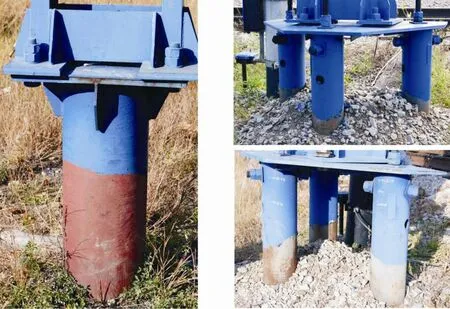
Figure 8 Soil heaving at the foundation supports of an electrical contact network built in 2007 at the Chernovskaya station of the Transbaikalian Railway: a foothold in September, 2011 (left photo), and support No. 81 in August, 2009 (right top photo)and in September, 2011 (right bottom photo)
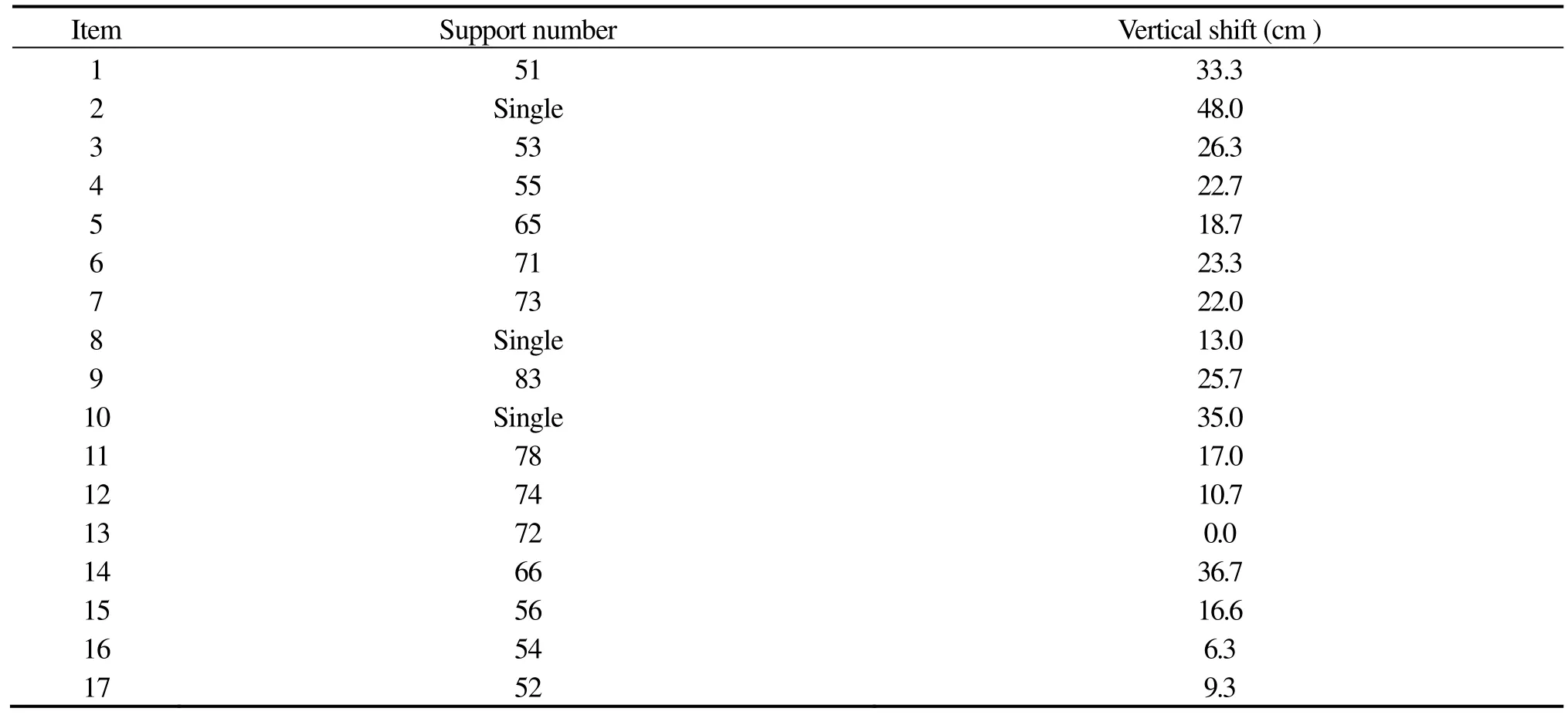
Table 1 Frost heaving of metal support foundations installed in 2007 in the Chernovskaya station of the Transbaikalian Railway,measured in September, 2011
New ways to stabilize pile foundations in permafrost soils can be used to repair unstable supports in the existing electrical contact network of the Trans-Siberian Railroad and other railroads in areas of permafrost soils and deep seasonal frost. These methods can be used for building and repairing overhead power supply lines, signal system devices, communication structures, and elevated pipelines, which are also frequently exposed to the negative impact of frost heaving.
3 Geocryological problems associated with highways
Problems with embankment stability of subgrade soils are characteristic of highways within permafrost regions as well. Figures 9–11 illustrate this on the newer "Amur"Highway, which extends from Chita to Khabarovsk, Russia.
3.1 Thaw settlements of highway embankments
The "Amur" Highway is one of the largest contemporary civil engineering efforts in Russia. Construction of the 2,165-km road began in 1978 and was completed in 2010.However, many sections of the road are now subject to constant repairs that are not always successful, such as the high embankment on the "Amur" Highway where it passes over Chichon Stream at 247 km presented in Figures 9–11. Here,the uneven subsidence of the 20-m-high embankment has been observed since May, 2001, soon after the completion of this highway section.
Since that time, as is evident in Figures 10–11, subsidence of the road surface in some places has approached about 4 m, in spite of the periodic addition of soil and the releveling to profile grade. This highway section is in a very distressed condition. The subgrade soil in this section consists of 15 to 20 m of permafrost, with most of it being ice-rich soil that settles and flows upon thawing. As a result,permafrost degradation and corresponding deformation of the road under the prevailing conditions is expected to continue indefinitely. Although the designated design speed for this highway is 100 km/h, vehicle speed is now limited to 30 km/h in this section.
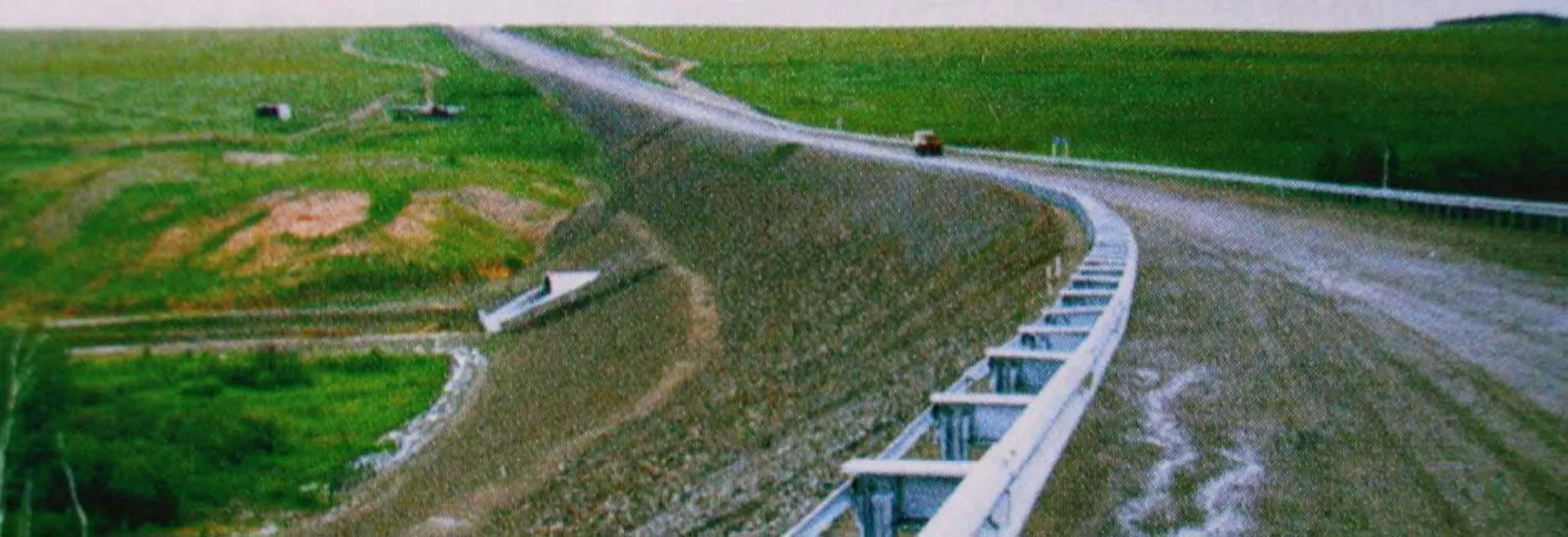
Figure 9 Section of the "Amur" Chita to Khabarovsk Highway, km-247, shortly after completion in 2001
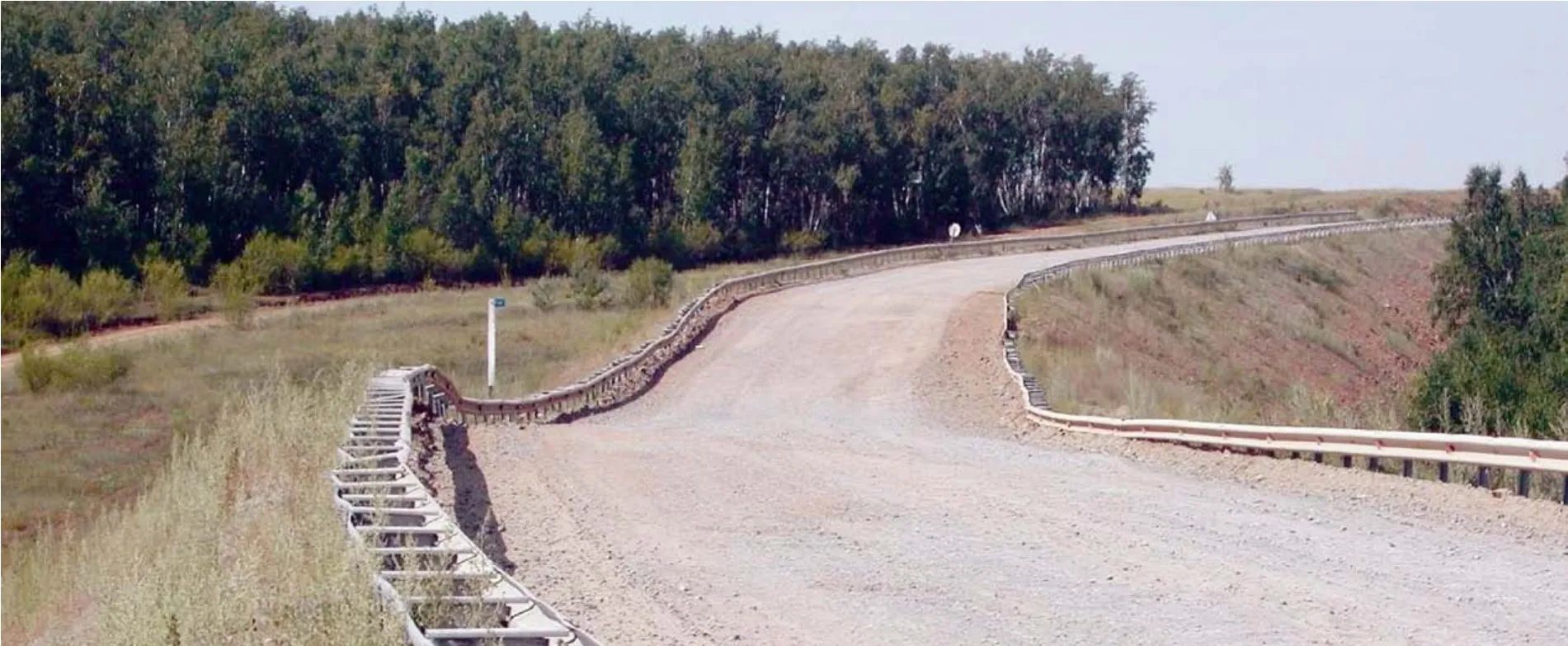
Figure 10 Section of the "Amur" Chita to Khabarovsk Highway, km-247, six years after completion (July, 2006)

Figure 11 Section of the "Amur" Chita to Khabarovsk Highway, km-247, 12.5 years after completion and after three major repairs (February, 2013)
There are a number of similar examples along the"Amur" Highway. Because much of the route passes through the southern fringe of discontinuous permafrost and also lies within a region of deep seasonal soil freezing, it is evident that ongoing changes in permafrost conditions and deep seasonal freezing will continue. Thus, it is important to identify permafrost conditions along the route, develop systematic means to address or control the cryogenic dynamics that adversely influence elements of the roadway, and initiate the timely application of protective measures. Therefore,in order to provide for more effective operation of this highway, in 2006 TransEGEM, Ltd. of Moscow developed the SIGMA "Amur" system of engineering-geocryological monitoring of the "Amur" Highway (Kondratiev and Soboleva, 2010). Its main precepts are:
1) The SIGMA "Amur" structure includes information gathering, processing and analysis of information, assessment and information storage, forecasting and projection of protective measures, and application of protection (implementation of protective measures).
2) The operating scheme of SIGMA "Amur" provides for a number of regular procedures arranged into cycles for data gathering and processing, assessment of hazardous engineering-geocryological processes, forecasting their future development, and management of unfavorable processes.
3) The operating structure of SIGMA "Amur" consists of several subsystems designed for different purposes: hierarchical, project monitoring and operating subsystems, productive work, and methodological and technical support.
4) The primary subjects of SIGMA "Amur" engineering-geocryological inquiry consist of three interrelated parts:geologic-geographical, permafrost, and highway conditions.
5) The overall program of the SIGMA "Amur" organization emphasizes optimal structure and consistency in practical operations, with regard to both organization and function.
6) The implementation of this program has three stages:preliminary stage, set-up of the information database, and actual SIGMA "Amur" operation.
7) Address future proposals on the organization of SIGMA "Amur" operation.
The early creation and functioning of SIGMA "Amur"was intended to provide a more reliable and safe highway that will reduce unproductive expenditures and improve its operations. Without application of such a concept, the"Amur" Highway will be subjected to continuing repairs,constant traffic speed limitations for vehicles, and major financial and material losses.
3.2 Corrugated metal pipe culverts
Another problem in building roads in Russia’s cryolite zone is that of building passages through poorly defined and small drainage channels. Until recently, on those route segments containing permafrost soil and icings, preference has been given to constructing small- and medium-sized bridges,even in those cases where there was limited exposure to potential ice mound development and validation of actual subsurface conditions might be available. Various forms of culverts were only utilized within evident waterless valleys and, usually, only in traditional ways involving standard round 1.5-m reinforced concrete pipe sections having one to four pipe passages at a drainage crossing. On occasion, rectangular sections having 2.0m×2.0m openings have also been used. Corrugated metal pipe was seldom utilized.
In 2003, it became obvious that extensive use of samll and medium-sized bridges on undefined and small drainage passages would delay the desired schedule for construction of the federal "Amur" Chita-Khabarovsk Highway and were not suitable, either technically or economically. In general,there was insufficient information on permafrost conditions for those parts of the road through passages having some watercourse widths of up to 4 and 5 m. Along the route segments lying between 1,008 km and 1,020 km (Figure 11),concern about icings resulted in initial plans for three- and four-span bridges having lengths between of 55 and 97 m.Subsequently, additional subsurface investigation and research work was initiated to further assess icing potential and opportunities to develop measures for reducing the risk of drainage and structural failures. As a result,large-diameter corrugated metal pipe was justified for application at these drainage crossings.
During 2003–2008, a total of 138 corrugated metal pipe culverts were planned for the "Amur" road and 15 were installed. The pipes had circular diameters ranging from 1.50 to 4.30 m, with both ovoid and arch sections having widths of between 1.94 and 10.72 m. Heights ranged from 1.60 to 7.81 m and had equivalent diameters of 1.72 to 7.50 m. The lengths of the pipe crossings varied from 21 to 70 m and the pipe wall thickness ranged from 2.75 to 7.00 mm. The height of the fill above the pipe sections varied from 1.10 to 16.09 m and the inclines along these watercourses varied from 0.01 to 0.05. Discharge through these pipe sections ranged from 1.07 to 147.00 m3/s.
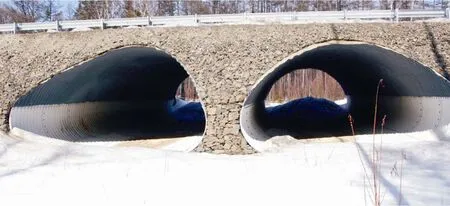
Figure 12 Corrugated metal pipe culverts constructed in 2003 on the "Amur" Highway, km-1,020, in April, 2011
4 Conclusions
The foregoing demonstrates that in order to achieve stable and reliable transportation routes in regions of permafrost and deep seasonal frozen soils, it is critical that a system should be utilized to provide comprehensive geocryological exploration and evaluation, use innovative and intelligent design solutions,allow timely and quality construction procedures, and provide for necessary ongoing maintenance.
Berg RL, Aitken GW, 1973. Some passive methods of controlling geocryological conditions in roadway construction. Proc. North American Contribution 2nd International Conference on Permafrost, Yakutsk, USSR: 581–596.
Bushin AV, 1992. On tasks for provision of railway roadbed reliability in modern conditions, Zh.-d. Transport Series "Put i putevoye khozyaystvo": EI/TsNIITEI MPS, (5–6): 1–14. (in Russian).
Feng WJ, Wen Z, Sun ZZ, Wu JJ, 2009. Application and effect analysis of awning measures in cold regions. Proc. 8th International Symposium on Permafrost Engineering. 15–17 October, 2009, Xi’an, China, pp.148–160.
Feng WJ, Ma W, Sun ZZ, Li GY, Yu WB, Zheng JF, 2011. Radiation effect analysis of the awning measure on the embankment slope field test in cold regions. Proc. IX International Symposium on Permafrost Engineering. 3–7 September, 2011, Mirny, Russia, pp. 319–325.
Feng WJ, Ma W, 2006. Experimental study of the effect of awnings along the Qinghai-Tibet Railway. Journal of Glaciology and Geocryology,28(1): 108–115.
Hayley DW, 1988. Maintenance of a railway grade over permafrost in Canada.Proc. 5th International Conference on Permafrost, 3: 43–48.
Kondratiev VG, Soboleva SV, 2010. Concept of the engineering-geocryological monitoring of the "Amur" Chita-Khabarovsk Highway. Zantrans, Chita, pp. 176. (in Russian).
Kondratiev VG, Pozin VA, 2000. Concept of the System of Engineering-Geocryological Monitoring of the Berkakit-Tommot-Yakutsk Railway. Zantrans, Chita, pp. 84. (in Russian).
Kondratiev VG, Pozin VA, 2001. Concept of the System of Engineering-Geocryological Monitoring of the Berkakit-Tommot-Yakutsk Rail-way.Beijing, pp. 64. (in Chinese) (ISBN 7-113-04260-0/TU 665).
Kondratiev VG, 1994. Strengthening of roadbed base on very icy permafrost soils. Abstracts of International Conference on Arctic Margins, Magadan,Russia.
Kondratiev VG, 1996. Strengthening railroad roadbed bases constructed on icy permafrost soils. Proc. Eighth International Conference on Cold Regions Engineering. Fairbanks, Alaska.
Kondratiev VG, 1998. Measures to control deformation of roadbeds on icy rich permafrost. Proc. 8th Congress of International Association for Engineering Geology and the Environment. Vol. V. Vancouver, Canada, pp.3365–3371.
Kondratiev VG, 2002. Design and experience controlling railroad embankment deformation on ice rich permafrost. Proc. Eleventh International Conference, Сold Regions Impacts on Transportation and Infrastructure,Anchorage, Alaska, pp. 467–482.
Kondratiev VG, 2004. Problems and ways of permafrost preservation in the roadbed basis. Journal of Glaciology and Geocryology, 26(suppl.): 8–11.
Kondratiev VG, 2005. Stabilization of roadbed and contact-line and airline supports on permafrost. Chitgu, Chita, pp. 241. (in Russian).
Kondratiev VG, 2006. The active methods of stabilization of roadbed and contact-line and airline supports on permafrost. Abstracts of Asian Conference on Permafrost. Lanzhou, China, pp. 57–58.
Kondratiev VG, 2008. Geocryological problems associated with railroads and highways. Proc. Ninth International Conference on Permafrost. Institute of Northern Engineering, University of Alaska Fairbanks. 1:977–982.
Kondratiev VG, 2011. Stabilization of roadbed on permafrost. TransEGEM,Chita, pp. 241. (in Russian).
Niu FJ, Shen YP, 2006. Guide of Field Excursion after Asian Conference on Permafrost (Aug. 10–16, 2006). Lanzhou, China, pp. 28.
Petrukhin NA, Potatuyeva TV, 1987. Roadbed and permafrost interaction.Tomsk University Publishing House, Tomsk, Russia, pp. 160. (in Russian).
American Society of Civil Engineers (ASCE), 1996. Roads and Airfields in Cold Regions. New York, pp. 321.
Sumgin MI, 1937. Permafrost within the USSR. Publishing House of the USSR Academy of Sciences. Moscow-Leningrad, (2): 379. (in Russian).
Wu ZW, Cheng GD, 1988. Roadbed engineering in permafrost regions.Lanzhou University, Lanzhou, China, pp. 43–50.
Yelenevskiy VV, Nizovkin GA, 1936. Railway construction in permafrost conditions. Transzheldorizdat, Moscow, pp. 239. (in Russian).
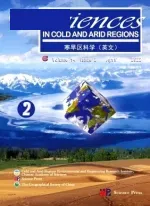 Sciences in Cold and Arid Regions2013年4期
Sciences in Cold and Arid Regions2013年4期
- Sciences in Cold and Arid Regions的其它文章
- Development of a dynamic load direct shear apparatus for the study of permafrost
- Field monitoring of railroad embankment vibration responses in seasonally frozen regions
- Different discretization method used in coupled water and heat transport mode for soil under freezing conditions
- Reinforcement effects of ground treatment with dynamic compaction replacement in cold and saline soil regions
- Review of the influence of freeze-thaw cycles on the physical and mechanical properties of soil
- Neumann stochastic finite element method for calculating temperature field of frozen soil based on random field theory
